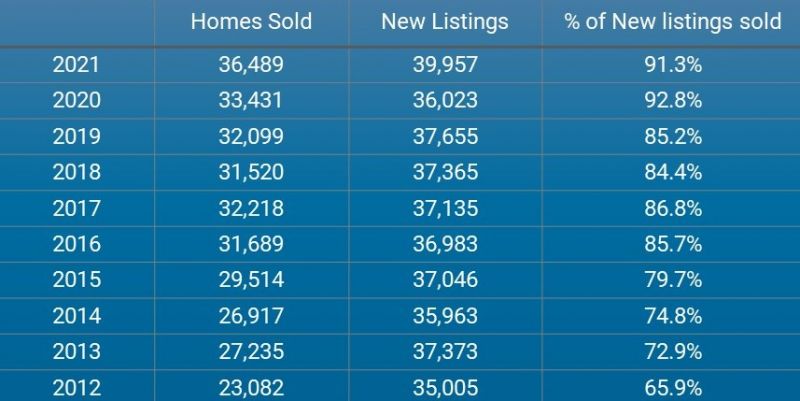Following a record-breaking year, January’s housing activity falls flat as new listings, contracts and home sales drop below those of 2021.
Columbusrealtors.com | FEBRUARY 18, 2022
New listings were up 11 percent in 2021 but ticked down (0.5 percent) in the first month of 2022.
Home sales and contracts dipped 2.8 percent and 0.8 percent, respectively. Even so, home sales were still higher than any other year according to the Columbus REALTORS® Multiple Listing Service (MLS).
The median home price increased 11.1 percent to $250,000 and the average home price ($290,847) increased 10.4 percent compared to January of 2021.
“The central Ohio housing market was very active last month, despite the slight drop in sales,” said Sue Van Woerkom, 2022 President of Columbus REALTORS®. “We’re seeing some buyers get discouraged due to lack of inventory. But, with perseverance, we will find them a home.”
Population in the counties served by the Columbus REALTORS® MLS increased almost 13 percent between the 2010 and 2020 census representing 85.5 percent of the population growth for all of Ohio.
Keeping pace with the population growth, the number of new listings grew by just over 14 percent over the last decade. However, home sales have grown 58 percent during the same time frame.
Ten years ago, REALTORS® were selling 66% of the inventory. In 2021, they sold 91.3 percent!
“It’s no surprise that more and more folks want to live here,” added Van Woerkom. “Central Ohio has so much to offer, from arts and entertainment to parks and recreation. It’s a great place to live, work and raise a family!”
However, people are looking at New-Home Sales differently… Read on to see that New-Home Construction Sales have decreased in the first months of 2022.
New-Home Sales Slump in January as Weather, Rising Interest Rates and COVID-19 Impact Demand
Feb 24, 2022
The numbers: U.S. new-home sales decreased 4.5% to an annual rate of 801,000 in January, the government said Thursday. That figure represents the number of homes that would be sold over a yearlong period of time if the same number of properties were bought each month based on the rate of sales in January. Compared to a year earlier, sales were down more than 9.3%.
Economists polled by MarketWatch expected new-home sales in December to rise to an annual rate of 803,000.
The new-home sales report from the U.S. Census Bureau, unlike the existing-home sales report from the National Association of Realtors, records sales when the contract is signed rather than when the transaction has closed. The report’s small sample size means that it can be volatile and prone to large revisions.
What happened: There was a high degree of regional variation in January’s new-home sales data. Sales of newly-constructed homes in the West actually increased by 1.2%, while they fell 10.7% in the Northeast.
The number of homes for sale at the end of the month rose to a 6.1-month supply. Generally, a 6-month supply of homes is considered indicative of a balanced market—meaning there are enough new homes for sale to meet consumer demand. Nevertheless, the median and average sales prices for new homes both increased in January.
The big picture: Notably, the number of new homes sold in December was revised upward to 839,000, suggesting that January’s dip may be an aberration. As Pantheon Macroeconomics chief economist Ian Shepherdson notes, bad weather and the omicron variant likely depressed new-home sales last month.
“New home sales data are captured at the point contracts are signed, sometimes at new home construction sites,” he wrote in a research note. “Fewer people visit developments during weather events, and millions of people had COVID at some point in January.”
Still, rising mortgage rates are pressuring affordability. In time, that trend could have an effect on home-buying demand, which could reduce sales of both new and existing homes.
Looking ahead: “High home prices have been a headwind to the housing market, and now steadily rising mortgage rates, a further drag on affordability, appear to be weighing on demand,” said Rubeela Farooqi, chief U.S. economist at High Frequency Economics, in a research note.
“We expect to see the inventory of homes available for sale begin to grow in 2022 from record-low levels as construction gives buyers new options, and existing homeowners venture into the housing market,” said Danielle Hale, chief economist at Realtor.com.











